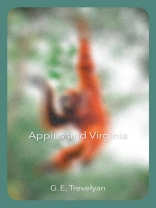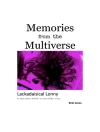A REDISCOVERED WORK BY ONE OF THE MOST EXCITING NOVELISTS OF THE 1930S’One of the most important novelists of our day’ TIMES LITERARY SUPPLEMENT (1938)Virginia Hutton embarks upon an experiment. She will take an ape and raise it as a human child.She purchases an infant orangutan and names him Appius. She clothes him, feeds him, and puts him to bed in a cot every night. As Appius grows older, she teaches him to dress himself, to speak, to read, to stand and walk up straight, to eat his meals at the dining table with a knife and fork. She teaches him how to be human.The young orangutan is not always a willing student. His relationship with Virginia becomes fraught and flits between that of mother and child, teacher and student, scientist and experiment. But as Appius gains knowledge he moves ever closer to the one discovery Virginia does not want him to make: that of his true origins.Appius and Virginia explores the ongoing conflict between nature and nurture. It is also a chilling and unforgettable portrait of loneliness.G.E. Trevelyan wrote eight groundbreaking novels between 1932 and 1941 but her writing career was tragically cut short when her flat was hit by a German bomb during the Blitz. She died shortly afterwards and her books have subsequently been largely forgotten. This publication, the first reissue of any of her books since her death, seeks to restore the author to her rightful place in British literature.
Yazar hakkında
Gertrude Eileen Trevelyan was born in Bath in 1903 to an affluent family descended from Somerset gentry. She went to school in West London and then to Lady Margaret Hall, Oxford, where in 1927 she made headlines throughout the English-speaking world as the first-ever female winner of the Newdigate Prize for poetry.With the help of a private family income, she moved to a flat in Kensington where she proceeded to write eight published novels in nine years. The first, Appius and Virginia (1932), was hailed by The Spectator as a ‘brilliant debut’. Much of her work was experimental in form, most notably Theme With Variations, which meant that conservative critical reaction was not always favourable. Nevertheless, in 1938 the Times Literary Supplement hailed her as ‘one of the most important novelists of our day’.Her career was cut short when her flat was damaged during the Blitz in October 1940. Badly injured, she died four months later at a care home in Bath. She was 37.












